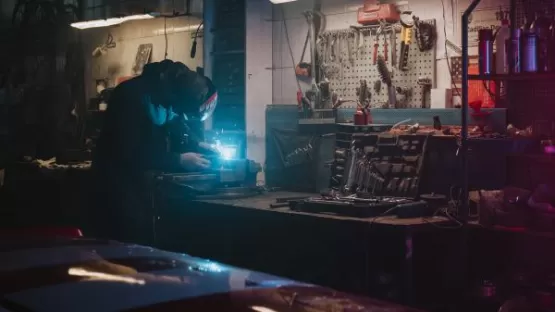- How the TIG welding process works
- Use of shielding gases for TIG welding of high-alloy materials, carbon steels and non-ferrous metals
- Low-oxide TIG welding: Additive hydrogen components for low-oxide TIG welding of high-alloy materials.
- Overview of suitable gases for TIG welding
- Suitable pressure reducers for TIG welding
- Training courses and practical seminars for accident-free and safe working in arc welding
- Videos and tutorials on TIG welding
TIG welding is suitable for many different materials. Especially when TIG welding high-alloy steels and non-ferrous metals, the process ensures high cost-effectiveness and virtually limitless application thanks to its high automatability, the achievement of high welding speeds, the minimisation of rework and its low distortion. The use of process gases can have a decisive influence on cost-effectiveness, productivity and product quality. Their physical and chemical properties open up a whole range of possible solutions for savings and improvements.
How the TIG welding process works

TIG welding – in accordance with DIN EN ISO 4063 "Tungsten inert gas welding" and "Welding procedure 141" – is a welding process with a non-consumable electrode.
The TIG welding process is based on the generation of an electric arc between the workpiece and the electrode, which is made of tungsten. This is fed separately to the arc in the form of wires or rods and thus melted.
- Shielding gas protects against atmospheric influences
In TIG welding, the arc burns between the tungsten electrode and the workpiece. TIG welding is mostly used for high-alloy steels – in particular high-alloy austenitic CrNi steels, nickel, aluminium and copper and their alloys. Inert shielding gas surrounds the electrode and the molten pool of the material. This protects the weld from atmospheric influences.
- Which shielding gases are used?
Inert shielding gases are used to prevent the melt from reacting with the ambient air – i.e. shielding gases that do not undergo any chemical reactions with the materials involved. These are often argon or helium – or a mixture of both gases.
- High-quality weld seams
The inert, i.e. non-reactive, gases prevent chemical reactions with the liquid weld pool and the heated material. This ensures high-quality weld seams.
Use of shielding gases for TIG welding of high-alloy materials, carbon steels and non-ferrous metals
The selection depends on the materials to be processed, the type of gas supply and the welding conditions.
In TIG welding (welding process 141), shielding gases based on argon and helium with reduced additions of nitrogen and/or hydrogen are generally used.
In addition to protecting the weld pool from the atmosphere, the various shielding gases influence:
- the arc stability
- the penetration behaviour
- the melting rate
ARCAL Prime, ARCAL N or ARCAL 31 N can be used to achieve different results.
Overview of suitable gases for TIG welding
With ARCAL 10 or ARCAL 110 as TIG welding gas, you can optimise the technological parameters, increase the melting rate and improve the penetration conditions.
The ARCAL shielding gas range helps you to increase the quality of the welded joint and the productivity of the welding process, as well as ensuring optimum working conditions. ARCAL quality gases are also available in the EXELTOP cylinder system with integrated pressure regulator.
Suitable pressure regulators for TIG welding
The inlet pressure plays an important role in TIG welding. A distinction is made between pressure regulators for 200 bar and 300 bar. The inlet pressure of the pressure regulator depends on the pressure of the gas cylinder and is tamper-proof thanks to different connections.
For TIG welding, the design is based on the required amount of shielding gas in litres per minute. The adjustment range is selected from 0 to 30 litres.
Training courses and practical seminars for accident-free and safe working in arc welding
Are you aware of the hazards involved in welding work? TIG welding can pose hazards due to noise, smoke, electric current and possible fires. It is important to be aware of these hazards so that you can protect yourself against them.
Trained employees are the best prerequisite for safe working with gases in your company – and are also required by law.
Have you ensured that you and your employees
- have the necessary knowledge to handle gases safely in order to prevent dangerous situations?
- can prove their qualification in handling gases?
- are familiar with the most important properties of the different gases?
- meet the requirements of the Occupational Safety and Health Act and the Industrial Safety Regulation?
Get professional support – and benefit from the extensive know-how and experience of Air Liquide's experts in technical gases. Arrange needs-based and practical training courses as part of the Air Liquide SchweisserCampus.
Videos and tutorials on TIG welding
Further welding applications
MAG welding (metal active gas welding, gas-shielded welding) low-alloy steels
MAG welding (metal active gas welding, gas-shielded welding) high-alloy steels
MIG welding (metal inert gas welding, gas-shielded welding) in automotive and metal manufacturing
MIG welding (metal inert gas welding, gas-shielded welding) in rail vehicle and shipbuilding
Laser welding
Laser hybrid welding
Plasma welding
Oxy-fuel welding / gas welding




